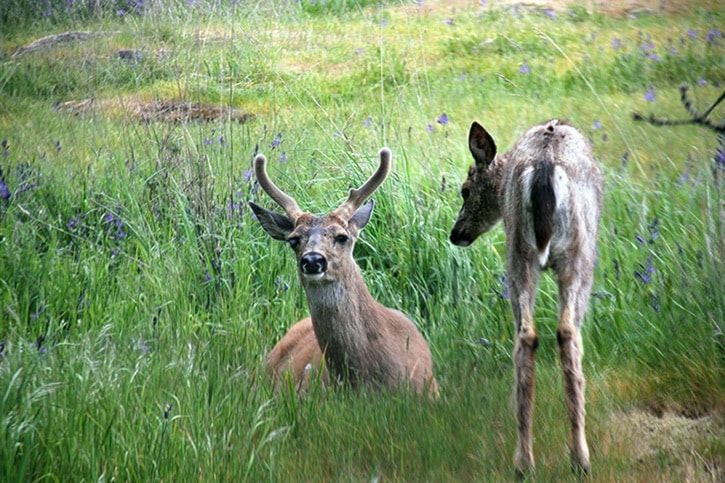A citizen-led non-profit is asking the District of Saanich to consider supporting the use of birth control to maintain or reduce the local deer population.
On Monday, the Urban Wildlife Stewardship Society gave a presentation to council, offering “an alternative program to lethal culls of deer.” The pilot project would use a Spay-Vac, an experimental immunocontraceptive vaccine, to introduce a foreign protein into female deer that prevents fertilization.
If permitted, the UWSS would trap, vaccinate, tag and release 25 deer and analyze the vaccine’s effect on the birthrate of fawns.
“We seek to control and possibly reduce deer numbers, to inform the public about urban deer, to gather biological facts about these deer, to reduce neighbour versus neighbour unrest and to reduce conflicts between deer and drivers,” said Bryan Gates, president of the society.
Gates said the vaccine is more humane than culling and a single dose can be effective for up to five or six years.
The UWSS currently has applications before the provincial and federal governments seeking permits to allow use of the vaccine, with the intent to start the pilot project as soon as the permits are approved.
“We hope to reduce the number of fawns born each year, and we hope to understand the biological and ecological science of our urban deer so that they can be managed effectively,” said Gates.
The push for contraception follows the culling of 11 deer in Oak Bay earlier this year, which was widely criticized as inhumane by groups such as the BCSPCA.
While the injection would spare the deer’s lives, Gates said they would still have to use clover traps – boxes baited with food – to capture the deer for vaccination and tagging. However, UWSS vice-president Kristy Kilpatrick emphasized that while clover traps were a point of controversy in the previous culling of deer, the injections will be conducted calmly and carefully by experienced wildlife biologists.
“At this point, our ask is that if you are going to engage in any kind of a deer management program that you use us as a resource,” she said.
The cost of administering the vaccine to 25 deer is estimated at $60,000, though Gates said they have enough Spay-Vac to vaccinate another 25 to 50 deer – the cost is merely dependent on how many deer they can catch.
Coun. Colin Plant asked how the cost of using Spay-Vac compares to actually spaying deer. Gates was uncertain of the difference, but said he was confident Spay-Vac would be much cheaper than trapping, sedating, transporting, spaying and releasing deer.
Gates also said though the vaccine is effective up to five or six years, few deer live past the age of 10.
The tags would be used to differentiate between vaccinated and unvaccinated deer, but would also label the deer as “not for consumption,” according to Gates.
“It’s an experimental drug and it’s not approved for general use in any wildlife in Canada at this point, but if we are successful in getting the permit from Health Canada, then we will do it that way,” he said.
